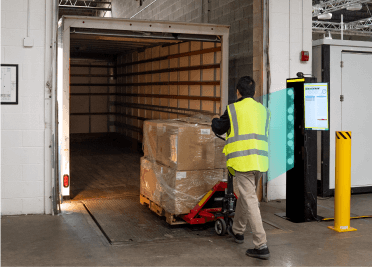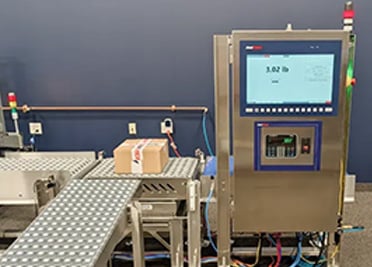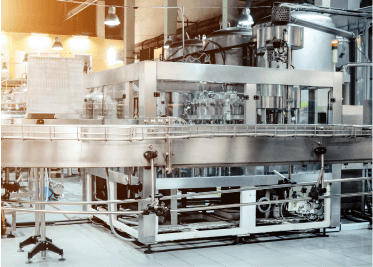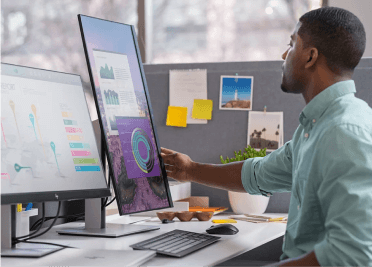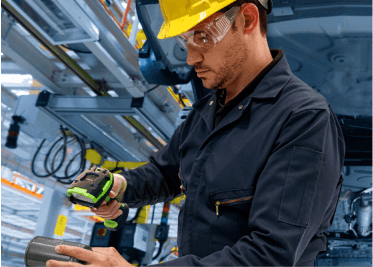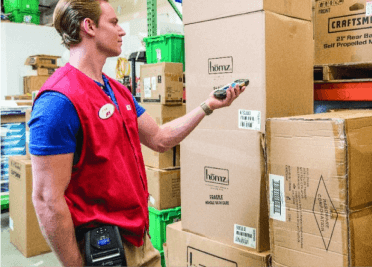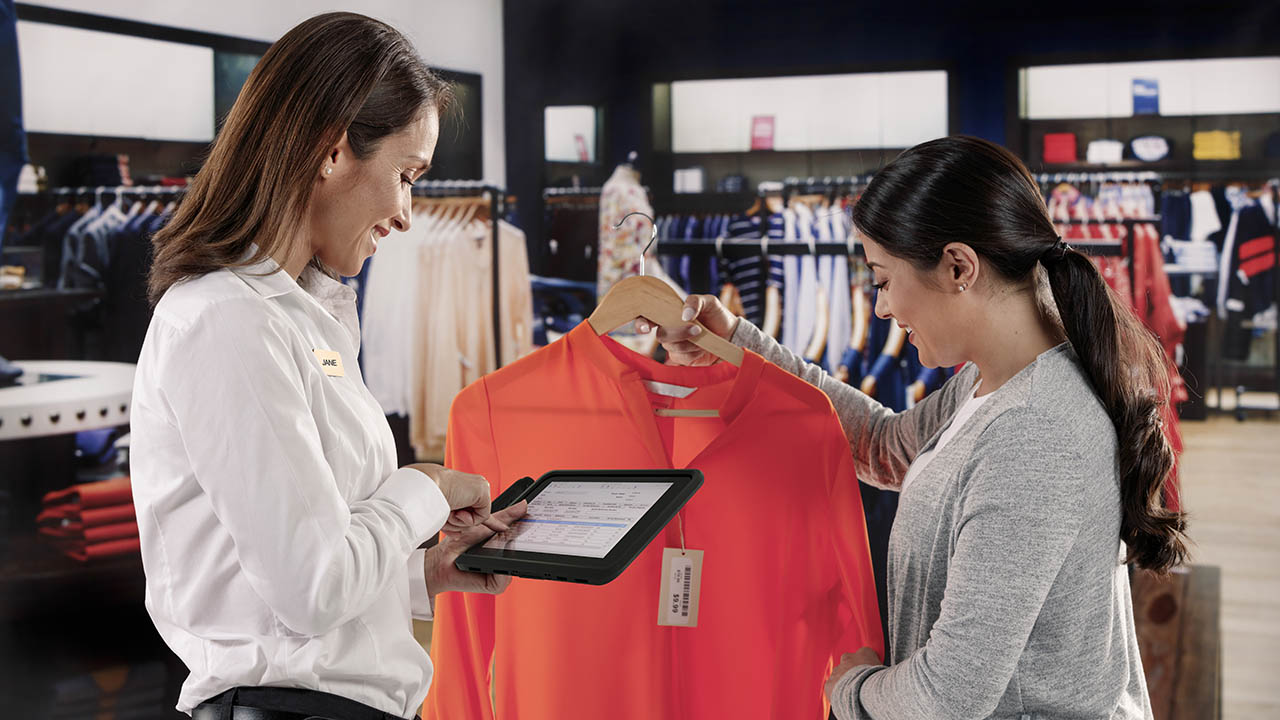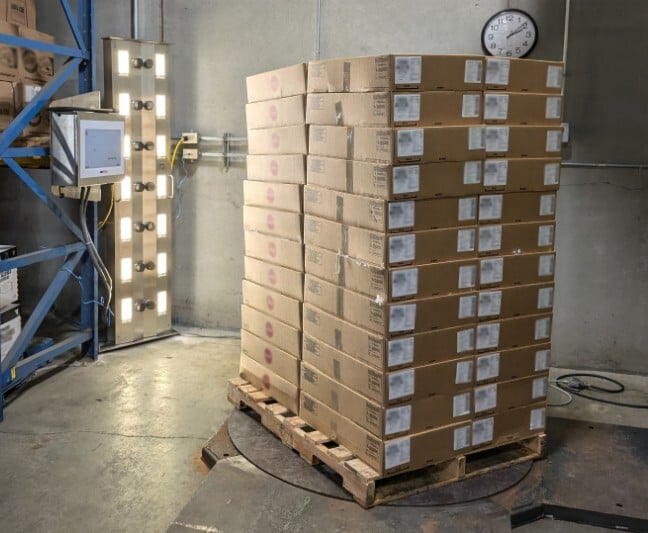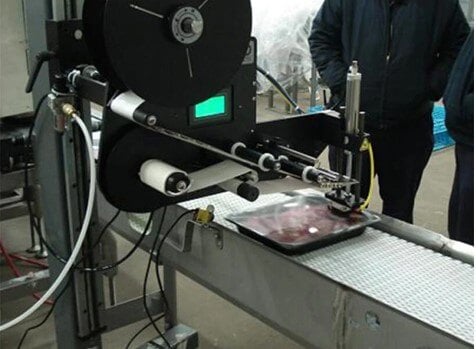Did you know that prior to the COVID-19 outbreak, one in every four consumers chose to shop in store versus online because they liked the help and personalized assistance they received from store associates? Did you also know that more than half (53%) of people preferred to shop in store because it gave them the opportunity to browse and experience products in a way not possible on the internet? (Like the time I bought a “wall” clock online that was only 1.5 inches across when it came.)
It’s true. The in-store experience was still very much in style just a few short months ago, as Zebra’s 2020 Shopper Study revealed. And it appears that COVID-19 didn’t dampen the enthusiasm for in-store shopping too much. Crowds have been flocking to stores as they reopen all around the world.
That being said, some shoppers may walk out just as they walked in: empty handed. They still expect a certain level of “instant gratification” beyond the fact that they have the choice to shop in stores. In fact, 41% of shoppers opt to shop in physical stores because they believe they will be able to buy what they want or need on the spot.
And though the majority (81%) of shoppers are either “somewhat or very satisfied” with the variety or selection of products available to choose from when stores are fully stocked, retail industry professionals know that it has always been impossible to stock every size, color and/or configuration SKU in every store. There’s never enough room to stock multiples of everything. It’s not unlikely that shoppers will find their desired item out of stock at some point in time.
That is why it is so imperative to arm store associates and even customers with “assisted selling” tools that enable them to quickly check inventory in stockrooms, other stores and even warehouses for desired items. Even if you have to direct the customer online to purchase the item, you’re still fulfilling their order from your inventory versus a competitors’ and providing that feeling of instant gratification. Plus, if you sell highly customized goods such as furniture, automobiles or home improvement items, you can appreciate the extensive level of assisted selling that must occur to ensure the customers walk out having purchased exactly what they want, even if delivery takes place at a later date.
Even fast casual and quick service restaurants (QSR) are under increasing pressure to provide hyper personalized customer experiences at extreme speeds (and, now, from extreme distances), as described in these two recent blog posts:
Restaurateurs: Study Reveals that Service “Speed” Is a Bigger Deal Than “Deals”
and
QSRs Say “Bye, Bye, Bye” to Customers Faster Than Ever with These Line-Busting Tech Tools
That leaves many retailers and restaurateurs wondering how they can improve inventory planning and management activities and adapt their assisted selling capabilities to work within current social distancing protocols. It is also driving them to consider exactly how certain technologies such as the retail and hospitality-focused Zebra ET51 rugged tablet can help deliver the quality in-store shopping experience customers expect without compromising employee or shopper safety.
While there are many different strategies and tactics that can be taken, such as the utilization of prescriptive analytics, the first step should indeed be to equip front-line workers with the technology tools they need to fulfill any customer request. In many cases, the best tool may be a tablet with a larger, daylight viewable touchscreen, built-in scanner and mobile payment capability that can just as easily be used by employees outside to take curbside orders or manage pickups as it can be used by customers in a kiosk-like setup throughout the store or at a restaurant table for “physically distant” ordering and payments.
If your store specializes in customizable goods, then it helps when store associates have a large-screen mobile device that enables the customer to clearly visualize the design before making a decision. Whether buying a new couch, car, event cake or kitchen cabinetry, shoppers want to be able to see and experience the product in 2D – and sometimes 3D – as if it were sitting there in front of them. Large, bright tablets make it easier for employees to show, or even hand over, that visualization to customers from a safe distance.
Of course, being able to process a payment and complete the sale in the middle of the store floor or a parking lot is also highly beneficial right now as efforts are made to keep customers out of long, stagnant checkout lines and, in many cases, out of the store all together. Being able to accept and fulfill orders at customers’ cars is proving very beneficial in managing store capacity and maintaining social distancing, as is the ability to process car buying paperwork outside versus inside the dealership.
Plus, we all know that customers can easily spend more than a few hours in a home improvement store checking out flooring, bathroom and kitchen options. When they’re finally done building out their order, they just want to be able to swipe and sign to start the fulfillment process. The last thing they want is to have to wait in a long line at a checkout register or even go back to a desk to find the credit card terminal.
That is why Zebra has engineered a new configuration of its popular ET51 rugged tablet specifically for retail and hospitality use.
RETAILERS AND RESTAURANTS MUST DO MORE TO DELIVER THE PERSONALIZED SERVICE THAT GUESTS EXPECT, WHILE MAINTAINING A SAFE PHYSICAL DISTANCE
Approximately three-quarters of store associates (74%) and retail/QSR decision makers (77%) believe that customers are satisfied with the level of personalized service they provide. Yet, only a little more than half (57%) of consumers we surveyed for Zebra’s 2020 Shopper Study were either somewhat or very satisfied with the personalized service they received (prior to the COVID-19 outbreak). Even fewer (54%) were somewhat or very satisfied with store associates’ ability to suggest complementary products to the ones they were interested in. (For perspective, 72% of store associates and 81% of decision makers believed they’re excelling in this area.)
Though the study didn’t confirm the reason(s) for the discrepancy, we suspect that many store associates have been ill-equipped, technologically speaking, to thoroughly access and search inventory databases, visually show customers alternative options and/or accept payment right then and there on a mobile device to close the sale.
Though retailers and restaurant owners are beginning to rethink their technology utilization as they work to increase safety without negatively impacting the customer experience, swifter action needs to be taken to equip workers with large screen mobile devices that help customers quickly get in and out of stores. Many no longer want to slowly browse aisles or linger at restaurants. So, you must ensure your employees can help each customer walk out satisfied every time, whether that’s with a delicious meal in hand or a new couch on its way to their home.
The problem is some employees may only have a mobile handheld computer with a 5-inch or smaller screen on their tool belts, which isn’t very conducive to customer browsing or 3D visualization – even if it does have an integrated barcode scanner and mobile point of sale (POS) capability. Others may be relying solely on desktop computers to manage inventory searches and product customizations and then sending customers with printed invoices to a different register to checkout. Then there’s the possibility that associates are equipped with handheld mobile computers, tablets or standalone barcode scanners that prove effective for checking inventory pricing and availability in the stockroom, warehouse or local stores, but can’t be used to actually order the products that customers want because they lack the POS capability. As a result, items are deemed “out of stock” by associates, and customers leave empty handed.
Therefore, it only makes sense to give associates – especially those who conduct a significant number of product customizations, support curbside or drive-through services or help with in-store queue busting– a larger-screen in the form of a rugged tablet with an integrated barcode scanner and mobile payment solution option.
Enter the Zebra ET51.
NEW RUGGED TABLET WITH INTEGRATED SCANNER AND PAYMENT SOLUTION MAKES THE SHOPPING EXPERIENCE FASTER AND MORE FULFILLING FOR CUSTOMERS – AND ITS NEW FACTORY-INSTALLED FEATURES MAKE IT EVEN FASTER TO ROLLOUT REMOTELY
The lightweight ET51 has been in Zebra’s tablet portfolio for about a year. And, though compact, the 8-inch tablet gives the store associate more screen real estate than a smartphone-like device to access and view information and, when needed, allow a customer to browse inventory without a store associate standing right by his or her side. The larger display size also provides larger targets for choosing buttons and applications. As a result, this rugged tablet has proven to be the form factor of choice for image-reliant use cases, such as assisted selling, planogram applications, form fills, self-checkout applications and even curbside, table-side and kiosk ordering.
Keeping the retail and hospitality customers in mind, the tablet has been further enhanced, adding industry-specific features and capabilities that can help boost their worker productivity and customer satisfaction even more.
For example, delivering this enterprise tablet to retailers fully assembled with a rugged frame and integrated scanner offers a faster rollout without needing someone from Zebra or our partner community physically in store to get you up and running. You just have to switch the battery door to the payment-compatible battery door from MTI/Armor Active to instantly transform your tablet into a true mobile POS solution. We have also added a factory-installed hand strap on the left side of the tablet that is adjustable and re-mountable (if you have a worker who prefers it on the other side) and we’ve added a new protective framing that can withstand nearly 4 ft. (1.2M) drops onto concrete and frequent device cleaning. (Yes, even retail and restaurant workers are prone to dropping devices when line-busting, delivering orders and more. Therefore, workers inside and outside your four walls really need inherently rugged mobile devices, as my colleague Anees Haidri explained in this blog post.)
As a result of these few configuration changes, the multi-function ET51 comes with a lower total cost of ownership (TCO) and a higher total benefits of ownership (TBO) quotient. It can be quickly ordered, shipped and deployed in an Android operating system (OS) configuration, which is backed by Zebra’s 15 value-added Mobility DNA tools or the Windows 10 OS.
With just this one tablet in hand, a store associate can scan a shelf tag or item tag to verify price, lookup alternative SKU options and additional inventory locations; retrieve and input any information needed to assist with customer purchases; and complete a sale right on the spot (wherever that may be), improving operational efficiencies, boosting shopper satisfaction and securing more sales. Alternatively, the tablet can be installed on restaurant tables or outdoor kiosks to allow guests to scroll menus and facilitate contactless ordering and payment.
Of course, there are other rugged tablets designed to support retail, QSR and hospitality workflows in a similar manner, including Zebra’s own L10 and R12 models. However, the ET51’s new multi-function design might be just what you’re looking for if you need a compact, lightweight rugged tablet with an integrated barcode scanner and full compatibility with the most popular third-party mobile payment solutions.
Our recommendation is that you at least check out the ET51 to see if it aligns with your current mobility needs, especially from an assisted selling and/or mobile point-of-sale (POS) perspective.
Contact one of our AbeTech Solution Experts Today to learn more about Zebra's Rugged Tablets!
